Tulips are gentle and beautiful flowering plants that can be found literally on each subsidiary. These flowers fascinate with their beauty, variety of varieties and a luxurious palette of paints. Associated with the arrival of heat, the awakening of nature and the beginning of the spring holidays, the tulip became a symbol of spring and beauty.
Flowering tulips with a fragrant gentle aroma create a magnificent spectacle, and given the undemanding in care, endurance and rapid reproduction of perennial, - put this culture into a number of the most universal and sought-after flower flowers.
This article describes in detail not only the peculiarities of growing tulips in open soil, but also presented their varietal variety, with a description and photo of tulips. With confidence, it can be said that it will be possible to choose a variety of tulips on their flowerbed. Just wishes, a bit of patience and the result will not wait long.
Tulips Flowers, Description
Municipal Tulips consider Central Asia, where the flower and got its name due to the similarity with the headdress of the east of the Türban. For the first time began to cultivate this culture in the XI century, in Persia. It is believed that the tulips were first brought to Europe in the XVI century, in the Vienna Garden. Soon, the flowers fell into Holland, where they began their real flourishing. Speculation of the bulbs of these beautiful colors in those days reached, sometimes before the fabulous sizes.
And only in the XVII century, the tulips fell into Ukraine and Russia, where they were grown by wealthy people. In the XIX century, many countries began to actively cultivate the tulips of various varieties, but Holland, as before, is considered the leader in the cultivation of this flower culture on an industrial scale. For example, annually the country exports more than 600 million planting material of tulips-lukov.
Tulip (Lat.Túlipa) is a representative of perennial bulbous plants from the Lily family. Refers to herbaceous plants - ephemeroids, that is, those that have a short growing season in the most favorable time for them.
It is early in the spring that these perennials are impressive with their beautiful flowers: large, correct, more often singles. There are also multi-scale varieties of tulips, where they are collected from 2 to 12 flowers. Known both simple types of tulips and complete (terry). The color of the inflorescence strikes the diversity of the tones: from snow-white, yellow-orange, purple to dark red, purple and purple-black. The shape of flowers is also varied and there may be a cupid, a glasswall, oval, pionic, star and other.
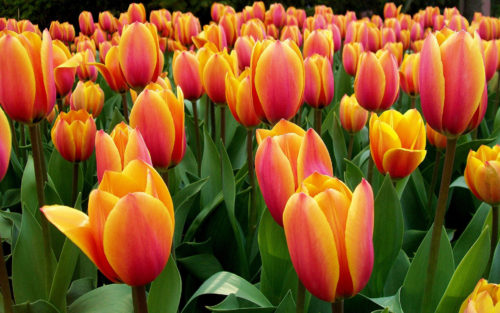
The fetus in tulips is a triangular box with flat seeds. The development of an adult tulip from the seed occupies from 3 to 7 years.
The tulip root is represented as a bulb. The outer surface of the bottom of the bulb is covered with apparent roots, killing by the end of the growing season. The bulbs of tulips are capable of forming hollow collishes - modified underground stems, on which daughters are formed. The generations of bulbs occur annually when young bulbs appear on the spot of the outflower.
Perennial stem is a reprehensive and cylindrical, growing at a height of 10 to 90 cm, which depends on the type. Leaves in tulips fleshy, smooth and wide, with a sly wax tint.
Garden tulips are more than 80 species and about 10 thousand varieties.
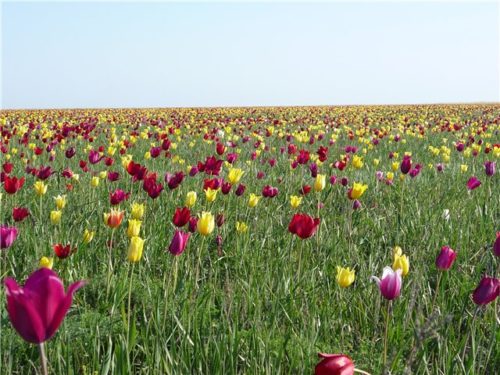
Varieties tulips
Due to the huge variety variety, a certain classification of tulips was approved and the register of their varieties was drawn up. This classification implies a division into 4 groups in which another 15 classes are distinguished. The classification is based on the difference in the timing of the flowering of tulips, shape, color of flowers and other distinctive features.
I Group "Ranked Tulips"
The group is represented by varieties with the earliest period of flowering, which begins at the beginning of May and lasts about 15-30 days. Tulips in a group - short, excellent reversible.
- 1 class
Simple Early Tulips: Stem is low, flower-resistant (25-40 cm), a large flower, has a glasswall or cupid shape, bright red and yellow colors. Apply for early reversing and planting in pots.
Sorts: Golden Olga, Golden Harvest, Ibis Mont Trorger, Demeter, Cardinal Cooler.
- Grade 2.
Terry early tulips: the height of the stem is not more than 30-35 cm; Fluffy-terry flowers, warm shades (red, yellow, orange), bloom long enough. The plant is actively cultivated as potted culture.
Varieties: Electra, Madame Test, Murillo, Shunord.
II group "Fixework tulips"
The most common, flower water, a group of classic tulips of medium-sized flowering time. A wide range of colors, large-size flowers and strength of high stems, allows you to actively use these varieties on the cut. Tulips are multiplied easily: the maternal bulb in July actively turns the mass of children.
- Grade 3.
Tulips of the Triumph series: Drawton durable and high, reach height from 40 to 70 cm. Large size flowers, cupid or glazing, diverse color (from white to dark purple).
Grade: Crater, Golden Eddie, Snowstar.
- 4th grade
Darwinovs Hybrids: The height of the blooming varies from 60 to 90 cm, large inflorescences are usually painted in a rich red color. Also derived varieties and other shades of red, even two-color. Different endurance and ability to intensive reproduction. Plants serve as beautiful material for cutting and pasture.
Varieties: Big Chif, Apeldo, Vivex.
III Group "Late Blowing Tulips"
The group presents the most exotic varieties of tulips of late blossoms.
- Grade 5.
Simple Late Tulips: Strong, High (60-80 cm) varieties, have large flowers with stupid petals. The color of the inflorescence is rich in the palette of a variety of shades: from snow-white to coal-black, from light pink to saturated burgundy. There are also two or three-color varieties. Practice cultivation on cutting and late tramp.
Varieties: George, Dillenburg, Bakhus.
- 6th grade
Liliece tulips: unusual, elongated glasswall, flowers with bent sharp petals look like a lily flower, a bloody height is about 40-70 cm, the color of the inflorescence is diverse and multicolored. Plants are used on the cut, and low species for late distances.
Varieties: Red Shain, White Triumfator, Gizella.
- 7th grade
Barbed tulips: large bowls of flowers are decorated with needle fringe along the edges of petals. The fringe is one tone with petals or have contrasting color. Unique decorative qualities of fringe tulips make up unusual, exclusive varieties. Sawing of inflorescence varies: from white and yellow to chocolate and purple. In height, the plant reaches 50-80 cm. Baked flowers have long retained freshness, which predetermined their use as a culture on the cut.
Varieties: Exotic, Maya, Burgundy Leis.
- 8th grade
Green tulips: the backs of petals have a distinctive green decisive. Unusual flowers have durable flowers and are actively grown in gardens, parks, lawns,
are suitable for cutting. The height of tulips on average: from 30 to 60 cm.
Varieties: Samurai, Hollywood, artist.
- Grade 9.
Rembrandt tulips: have a complex painting of petals, as if the artist's applied brush. Flowers are large, with strokes on white, red or yellow background. The height of the floweros reaches 40-70 cm. The class is widely used when disembarking in the open ground and on the cut.
Grade: Black Fight, Montgomery, Pierretta.
- Grade 10
Pargot tulips: Tulips varieties, whose flowers are similar to bright parrots. On the edge, petals wavy and cut, and the petals are folded and corrugated. Flowers are large, decorative, in the open form reaches about 20 cm in diameter. Shades of petals are very multifaceted (black, white, red and different). The plant has high and strong flowerons, convenient for cutting.
Varieties: Discovery, Black Parrot, Fantnesia.
- Grade 11
Terry Late Tulips: A plant with a height of up to 50 cm, amazes with unmatched blossoms. Often, the flowers cannot keep the weight of bright pionic flowers with a variety of color, and break. Used for trampling and cutting.
Varieties: Livingston, Eros, Nice.
IV Group of "Tulips Valid and Botanical"
These hybrid types of tulips are especially beautiful. They are inherent in the painting of the sheet, the buds of large sizes, low blooms. This group of tulips differs in frost resistance and is easily grown in the open ground, even with harsh winter.
- Class 12
Kaufman tulips: low (15-25 cm) varieties of early blossoms. Flowers are large, elongated, when opening, form as if "star". Varieties of diverse color, more often - two-color. Leaves are distinguished by purple splashes.
Varieties: Brilliant, Lady Rose Orange Fight, Crown.
- Grade 13.
Foster tulips: large flowers slightly elongated shape (up to 15 cm) with a short blur at 30-50 cm. Inflorescences are painted in bright red and red-orange tones, there are yellow and pink varieties. Leaves slightly wavy with rare purple strokes.
Varieties: Zombies, Payishn, Copenhagen.
- Class 14
Greag tulips: low-grade class (20-30 cm) with large flowers whose petals are slightly bent back. Shades of the inflorescence of red, the leaves are cracked. Popular in landscape design.
Varieties: Zapap, Plezir, Yello Down.
- Grade 15.
Botanical tulips: wild species, usually lowered, with early blossoms and a variety of color.
Sorts: Schrenk Tulip, Geesner.
Interesting fact
The crown of triumph of breeders can be called a black tulip, about 400 thousand dollars were spent on the removal of which was spent about 400 thousand dollars and many years ... The appearance of such a type of tulips dated 1986 and is obliged to Danish breeder Gert Hageman.
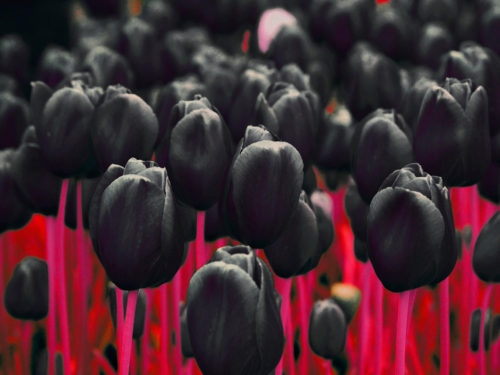
How to choose a grade tulips?
The choice of a certain variety of the flower depends on the timing of flowering, external characteristics and the estimated landing site (open soil, greenhouse or pot).
So, for planting tulips in pots, low-spirited varieties will be better, and for growing on a flowerbed or in a greenhouse - any.
Flowers are picking up for their site the best grades of tulips with different flowering times: from Rannets-driving to late cultures. Thus, the site creates a picturesque picture of continuous flowering of different types of tulips from April and before the beginning of June.
Planting tulips
It is not difficult to land on your site at all, but, for a successful result, it is necessary to comply with certain rules for agrotechnology.
Selection and preparation of bulbs
The bulbs of tulips are better acquired in advance, before the start of the landing season, best from the end of July to September. This is explained by the fact that the planting season find high-quality bulbs will be more difficult. In the spring, often realize old bulbs, from last season.
When choosing bulbs, preference should be given to whole, not damaged instances, with thin skin of golden color (the presence of small shallow cracks is allowed).
If the bulb is too big, with dark brown thick scales - the roots will be quite difficult to germinate. It is better to choose young, healthy, medium sizes, bulbs, without mold and other defects. At the same time, it is important to take into account that large bulbs differ in high reproduction ability.
When buying it is necessary to check the diacon of the bulbs. The root hillocks are visible on the quality product, of which the roots will be sprout. No need to acquire bulbs with a soft donation, sprouted roots or rot.
The bulbs of tulips can be bought in both garden shops and online stores. The planting material purchased on the market does not guarantee a varietal compliance and, as a rule, does not have a quality certificate, although attracts a low price.
Acquired tulip bulbs before landing are stored in a cool room, separately from others (sick bulbs can infect healthy).
Before planing, the bulbs need to look prettage to reveal and remove the infected material. The bulbs are sorted, purified from excess husks and disinfected for half an hour in 0.5% manganese solution.
Time and dates
In the natural medium, tulips grow in the steppes and mountainous regions of Central Asia. In the spring, they turn into real blooming carpets, and with the onset of heat flows. The bulbs continue to develop and deepen in the soil. In the fall, young roots appear, and in the spring, after winter rest, the tulips bloom again.
When is it better to plant tulips?
Landing tulips in autumn
Autumn - the most optimal time for tulips disembarking. The landing time also depends on the cultivation region, its microclimate.
In the regions of the middle strip, the bulbs are planted in mid-September. And in the southern regions, the timing is shifted until the beginning of October. Approximate temperature for planting bulbs is + 10 ° C.
The flavors at the bulbs are formed about 3-4 weeks. Therefore, when landing should consider the upcoming weather conditions.
If you put the tulips too early, the process of their rooting is delayed and there is a risk of infection with fusarium bulbs. Also, with warm weather, the bulbs can exist in the fall, and their coming frosts will destroy.
Too late landing is also not desirable. Due to low temperatures, the root system may not develop, and the bulbs will be more susceptible to rotting or freezing. Preserved, with damaged bulbs, tulips are poorly bloom and are not suitable for further landing. Therefore, in the case of late landing, it is necessary to cover the plot for winter sawdust or foliage.
Spring tulips landing
Tulips planted in spring are a bit lagging behind in development and bloom significantly later than falling in the fall.
In order to accelerate the flowering process, the bulbs are left in the refrigerator for a day, after which it is washed with a solution of manganese and after that it is planted in an open ground. Such manipulations need to produce before April, when it finally warmer. If, during this period, frosts are still expected, the bulbs of tulips are first planted in a special container, and only when a consistently positive temperature occurs - planted on the site.
Choosing a place and preparation of a plot for tulips
- Choosing a landing place, prefer good illuminated protected from drafts and wind, the site.
- Do not get too wet area, with close proximity of groundwater. Excessive humidity and stagnant moistureit can lead to rotting of the bulbs.
- Development depends on tulips soil selection. Culture prefers a loose, fertile and drained soil. Ideal loam and sandy loam, rich in humus. The plant likes a neutral and slightly alkaline soil environment.
- In spring, the soil is necessary to make organic fertilizers (Decomposed manure, wood ash or composted). Prepare soil for 1-2 weeks before planting, adding 5.6 kg per m2 decomposed manure, peat 2-3 kg and 50 g nitrophosphate.
Farming equipment tulip planting
- When planting tulips make special grooves or individual wells, depending on the method of planting and placing on the bed.
- Bulb pressed into the bottom of the grooves or holes and covered with soil.
- planting depth is on average 10-15 cm (height considered triple bulbs), and depends on the soil type and bulb size. On light soils are planted deeper than with heavy. Small bulbs - children, bury in the ground only 5-7 cm If you put the onion is very deep, then it will be much smaller daughter bulbs..
- Spacing kept about 20 cm, between bulbs - 10 cm.
- For planting tulips, you can also use plastic baskets. Bulbs neatly laid on its bottom, thus placing the prepared hole and prisypaya from above ground. So, color bulbs are not lost in the soil, and they can dig up at any time.
- After planting, tulips, need to pour portion and to avoid cracking of the soil, it is desirable zamulchirovat peat or sawdust.
Features of cultivation and care for tulips
To abundant flowering tulips pleasing others as much as possible for a long time, it is necessary to provide proper care the plant. Tulips - unpretentious culture, needs minimal attention grower.
Watering
Tulip - water-loving plant, but its short roots can not independently absorb moisture from the deeper soil layers.
So, timely watering of plants - an important condition for farming. The frequency and abundant watering is adjusted depending on the composition of the soil and weather conditions. Enough to make sure that the soil does not dry up.
The main condition is to provide a generous and systematic watering during the bootonization and flowering of tulips. Watering during flowering, it will noticeably increase its duration. Watering the plant needs and within a few weeks after the end of flowering.
Watering culture should be under the root, avoiding entering the leaves, which can entail the formation of burns in the sun.
Fertilization and fertilizer
During the life cycle, tulips are made several Podquok:
- at the beginning of the appearance of germs;
- during the formation of buds and flowering;
- After flowering.
- The first introduction of fertilizer - nitrogen is carried out when shoots appear. Nitric feeding stimulates the growth of tulips.
- The following feeder is carried out during the bootonization and directly during the flowering process. Comprehensive mineral fertilizers containing phosphorus and potassium contribute.
- The third time the tulips fertilize potassium and phosphor immediately after flowering, at the rate of 30-35 g / m². To enhance the development of subsidiaries, you can also add boron and zinc.
Tulips prepared for winter pastures need to provide a sufficient amount of calcium and magnesium in the soil.
Tulips love wood ash, which grabs the soil, enriching its valuable minerals.
Sunglet and soil looser
On flowerbed with tulips, loosenings are carried out regularly, especially after irrigation, in order to avoid the appearance of dry crusts and soil cracking. This agricultural use contributes to the preservation of moisture and enriching the soil with oxygen. Also be sure to remove weary grass on time. Soil mulch is an excellent alternative to weeding and loosening.
Diseases and pests of tulips
The greatest harm to the tulips cause different types of rot, fusariosis and viral disease - spells.
- Tulips can become infected fungal diseases - gray, white, soft, root, wet rot, especially with rainy spring. Such preventive measures are important: good soil drainage and compliance with the necessary agrotechnical requirements when planting and storing planting material. When infected, tulips are treated with fungicide and transplanted to a new place. With lesion gray Gnill.The leaves appear small spots of yellowish brown. The prophylactic of sulfur rot, the sprinkling of the bulbs is sulfur or the etching of them with a solution of TMTD. On shootings are performed by a spraying of 1% Bordeaux mixture or 1% eurogene. If brown spots appear on the roots of tulips - the plant is infected root Gnill.
- Disease - fusariosis, spreads through the soil. Signs of lesion: slow growth of culture, reducing bulbs in volume. Fudgeing with fusarium helps soil riffillary with special chemicals.
- Signs of viral disease - pepperlsare lightweight or light stripes (strokes) on leaves, buds and petals. There is no treatment as such, so the affected plants along with a lore land are destroyed, and the formed fossa is poured with a strong solution of mangalls. As prophylaxis, before cutting each flower you need to disinfect the secateur.
From pests for tulips are dangerous, bear, root onion ticks, scooping, snails, slugs and miserable rodents.
- In the fight S. onion mite Apply thermal processing of bulbs, lowering them for 3-5 minutes in boiling water. Finding the pest during the season of vegetation, the tulips spray 2% Rom Celtan or Rogo. In case of inadequance of all of the above methods, tulips destroy.
- For Medvedok, Slug and Sweetsyou can use traps: on the site they site rags, pieces of skis or slate, under which they like to drive pests, after which they collect daily and destroy insects.
- For extermination medvedok, In the ground, jars with water (not up to the top). When the insect falls into the water, no longer can get out of the trap.
- Concerning rodents Often enjoy mouselifiers or treated with the bulbs of tulips with iron uronomic or kerosene. To scare the mice, Narcissus and Ryabikov, whose bulbs are placed on the site next to the tulips, whose bulbs are poisonous for rodents. In the fight against rodents, it is also used to poison, which is buried next to the tulips.
Tulips Bulb Care
The life cycle of tulips looks like this: in the summer, after flowering and fading (usually in July), the bulbs dig up to keep until autumn. In September-October, they are planted again in the ground, where they and winter. Spring bulbs sprout, tulips bloom. In the summer, when they get yellow and start to dry the leaves, the process is repeated again.
When do you need to dig tulips?
It is important to dig up the bulbs of tulips in a timely manner!
I dug them too early, for example, immediately after flowering, the ability of bulbs to reproduction is reduced. Late cleaning when the soil mooring, threatens to crack the bulbs.
Clean the bulbs with a shovel, at the same time breaking the soil. Small bulbs are separated from maternal and dried in a dry place.
Why do you need to dig bulbs of tulips?
Considering the susceptibility of the plant bulbs to various diseases, pest attacks, the negative impact of moisture or temperature surges, the bulbs of tulips should be swollen annually and sorted. If this is not done, then every year the bulbs will continue to delve into the soil, the flowers are crushed, the stalks will become thinner. The maternal bulb will increasingly form subsidiaries, reducing the natural reproduction process. In addition, remaining summer in the soil, the bulbs are more susceptible to infectious diseases.
How to store bulbs?
After the end of the growing season of the plant (the leaves begin to dry, the stem becomes elastic), the bulbs dig out, believes the earth and an excess husk, leaving for storage in dark and ventilated place. During the storage period, each month decreases the temperature from the initial 25 ° C to 16 ° C.
The planting material can be stored in special plastic mesh containers, with a mesh bottom or in conventional cardboard boxes. Good aeration will help keep the bulbs dry and warn infection by any diseases.
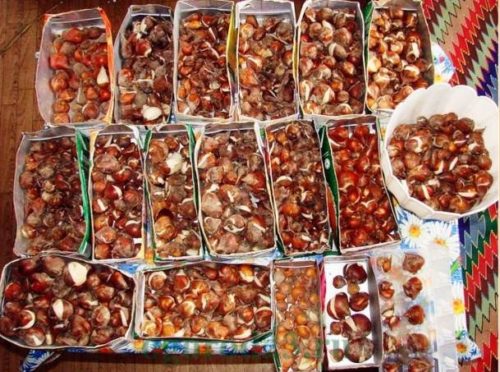
Caring for tulips after flowering
So that the tulips do not spend the forces on the formation of seeds, but increased the mass of the bulbs, the faded flowers immediately cut off, leaving only the leaves. The more leaves will remain, the more the bulb will be able to get nutrients.
After the end of the flowering of tulips, it is impossible to completely forget about the plant: it needs additional feeding with potash-phosphoric fertilizers and regular, gradually decreasing in volume, watering a couple of weeks.
Tulips Preparation for Winter
Before the start of frosts, in order to protect the bulbs from the frost, the beds are mounted in a peat or sawdust with a layer of 5-7 cm. Rannetic grades of tulips, especially susceptible to low temperatures, need an additional shelter with a spruce vegetable.
In the spring, after melting of the snow, shelter and mulch with a variety, the Earth will warm up faster, and the tulips will bloom before.
Tulip reproduction
Tulips are multiplied with seeds and vegetatively, with the help of subsidiary bulbs.
Semyon reproduction practices breeders in order to remove new varieties, since a subsidiary does not preserve the varietal signs of parental individuals. Such tulips bloom only in 5-6 years, and at first the flowers will be unpleasurable, and only for 8-12 years old decorative peak.
The reproduction of subsidiaries is the simplest and easiest way, in which the varietal signs of tulips are fully preserved. The smallest bulbs of tulips are separated and planted in autumn in a separate bed, it is covered with it. Moving them 1-2 years to get large full-fledged instances. Every summer they dig them like adult blooming bulbs.
Transplant Tulipov
In one place, the tulips grow an average of 3-4 years. Rare varieties need an annual transplantation, to maintain valuable varieties.
The execution of all the rules of the agrotechnology allows you to maximize the time of cultivation of culture in one place.
If the tulips are well developing and abundantly bloom - they do not need to replant. Only in the case of oppressed growth, deformations in the development of buds or petals, if there are signs of the disease - the plant requires a transplant.
Using Tulips in Landscape Design
Simple in caring, diverse color and shapes - tulips - one of the most common and favorite colors for both simple manuals and flower professionals.
The culture is widely used in the design of flower beds, mixtorers, rocaries, plant in vases and pots. Tulips wonderfully look with separate groups and in combination with other plants.
The manifold of shades and forms of inflorescence of tulips allows you to make various spectacular color compositions. They are planted along the paving path or simply on the decorative flower bed - the tulip looks great in any variations.
Tulips are also used to distillation or cut. Cut tulips retain freshness in water up to 2 weeks and give a beautiful spring mood to others. Thin gentle fragrance only enhances the overall pleasant impression. Truly, "tulips", "delight" and "holiday" became the words synonyms of modern life.
The palette of colors of tulips colors is very diverse and multifaceted. Shades of white and black, yellow and scarlet, purple and pink tones are impressive and pleasing. Flowers of individual varieties sometimes seem fabulous and extravagant (parrots, liliece, terry, green-color).

Within one variety of tulips bloom very friendly. Therefore, in the park area, plants are often planted with groups, platforms to maximize their decorative value, allowing you to admire the surrounding an unforgettable spectacle.
Tulips are harmoniously combined with other spring bulbous: daffodils, iris, hyacinths, proleski.

Tulips in garden vases and bizarre pots are especially gently and originally.
Now, having familiarized yourself with the secrets of growing tulips, everyone will be able to grow these beautiful flowers, rightfully considered the real decoration of the garden or balcony. And freshly cut bouquet will give a lot of positive emotions and impressions.
Tulips are associated with the arrival of spring and the onset of the new garden season. It is impossible to present the holidays on March 8, the day of St. Valentine without these beautiful colors capable of presenting spring warmth and sea of \u200b\u200bgood mood.
No doubt, the time of tulips is a bright and unforgettable period of present impressions and positive emotions!
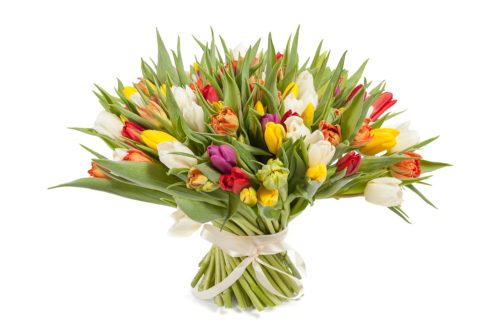

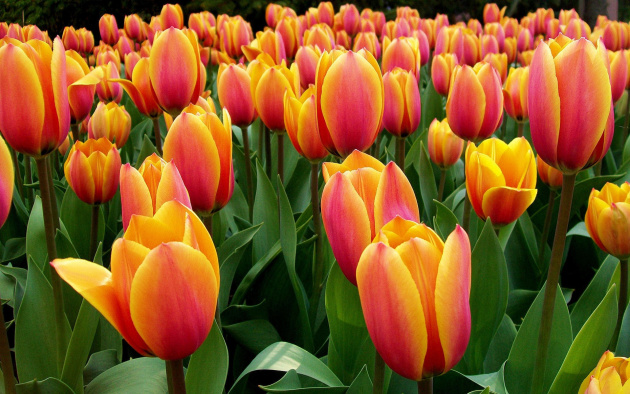





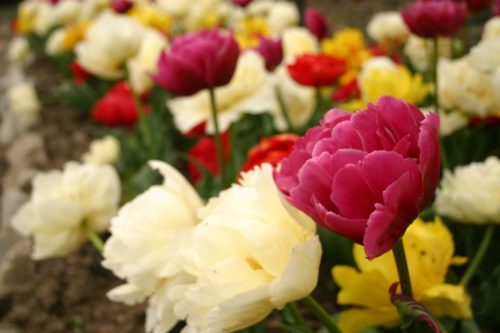
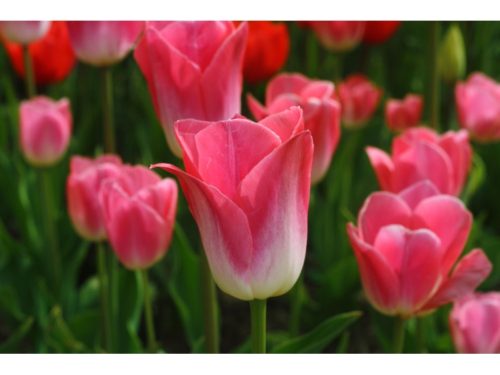
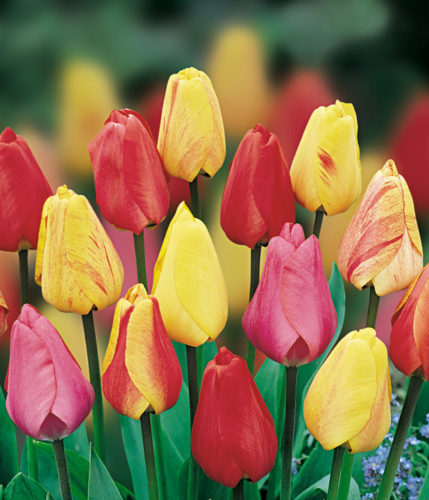
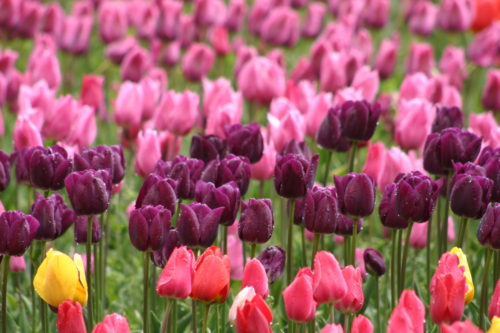
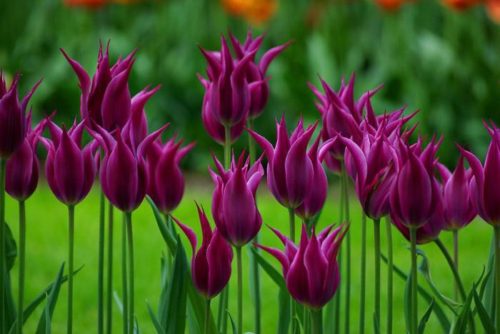
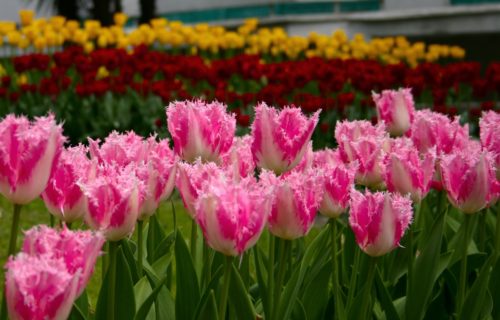

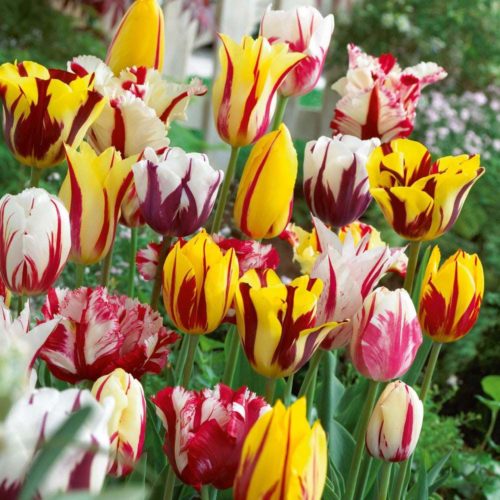
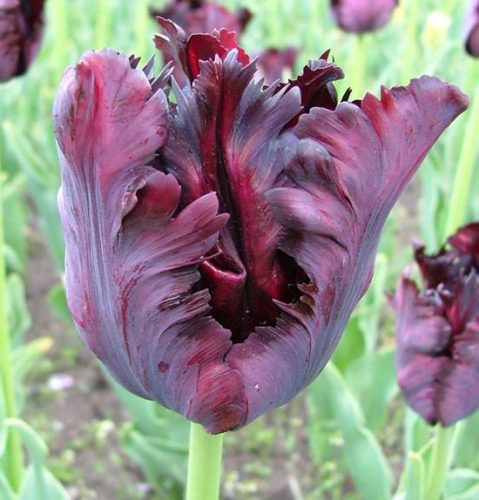
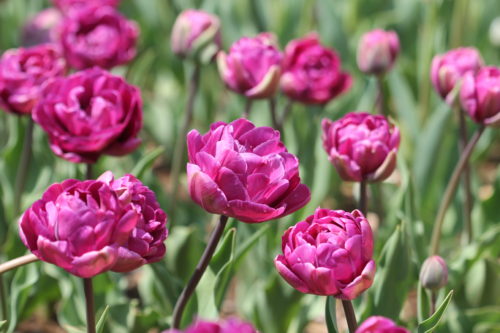
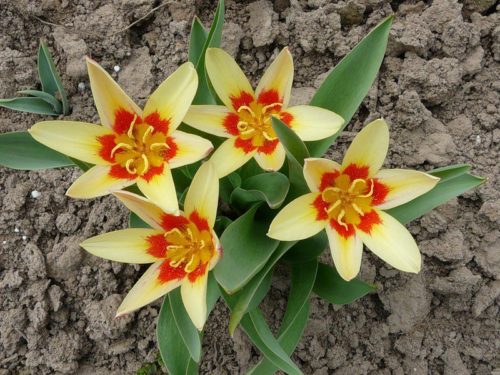
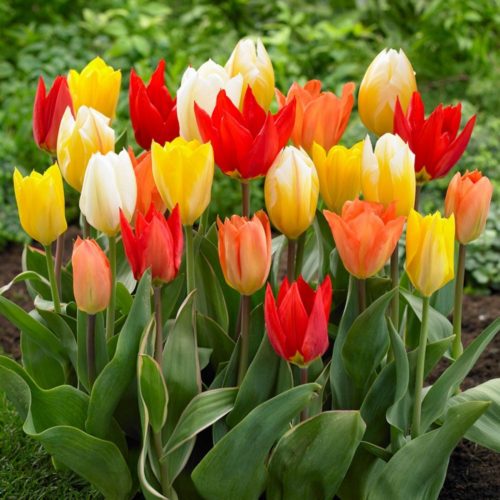
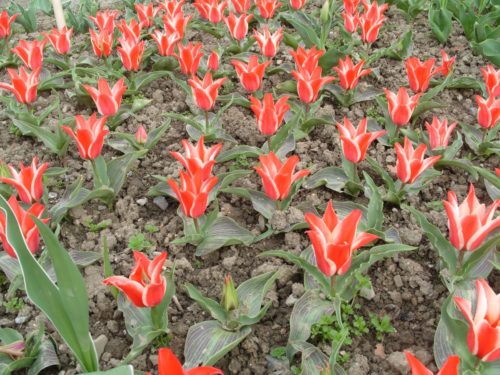
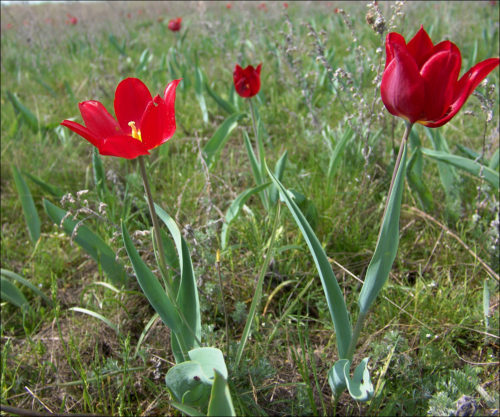
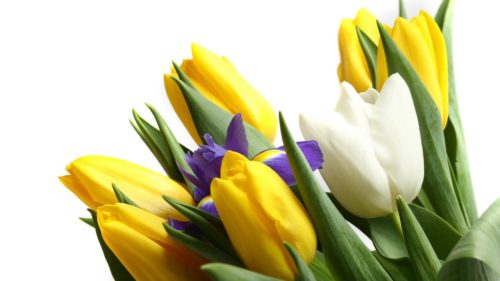
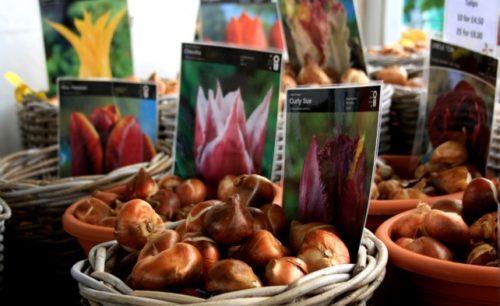
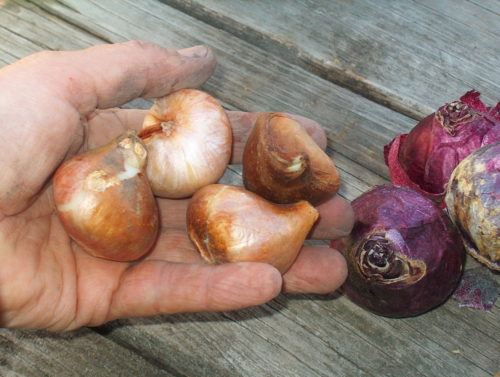
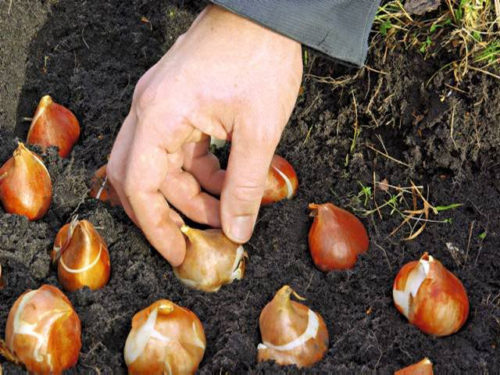
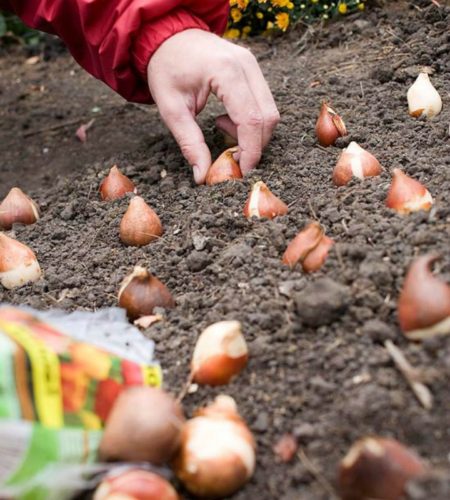
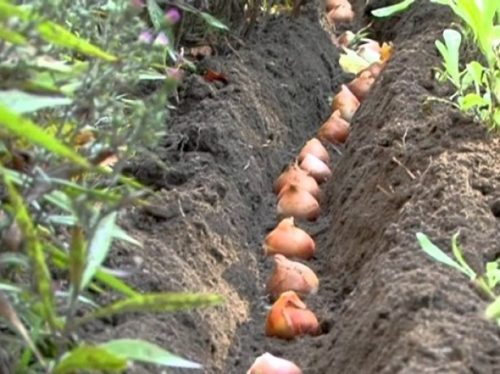

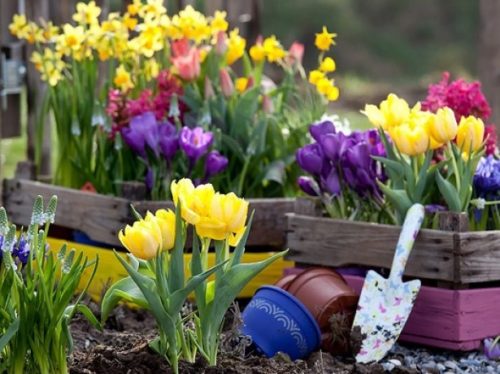

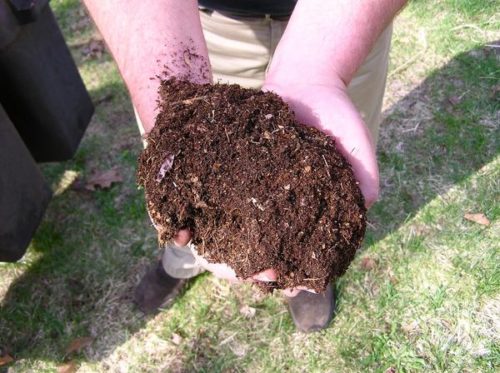
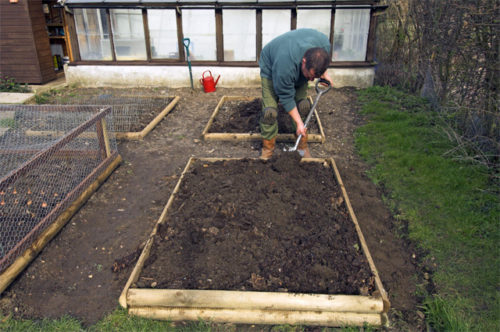
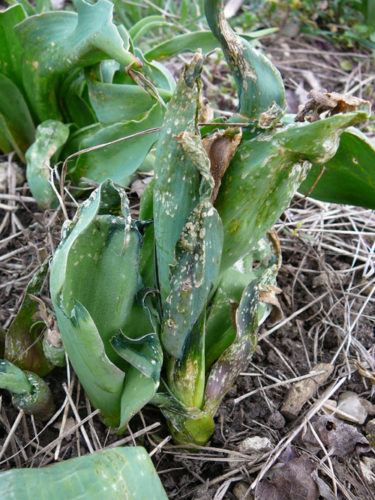

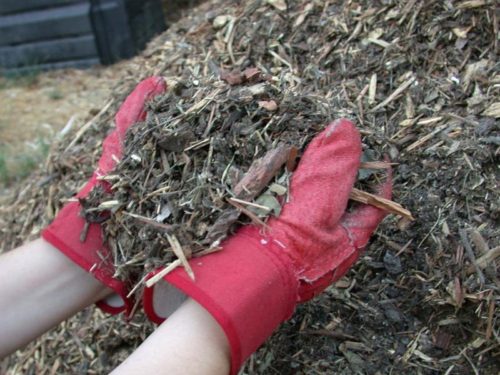
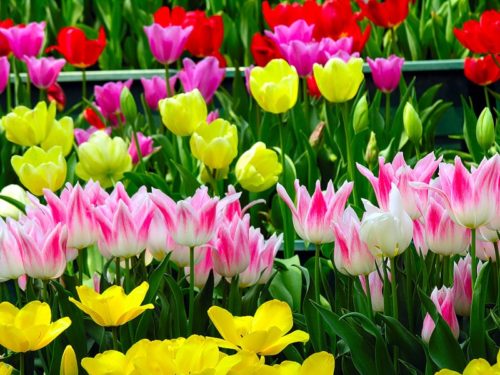
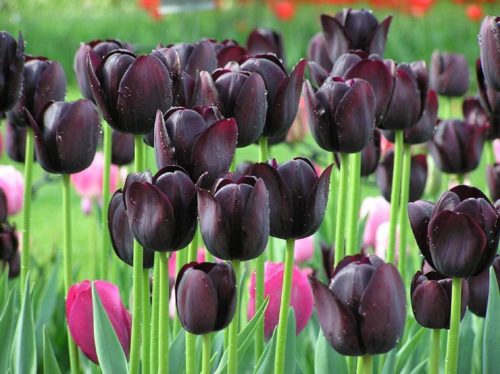

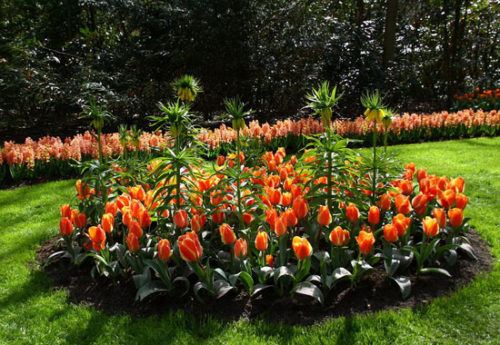


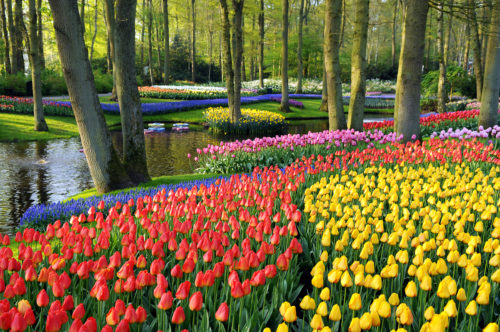

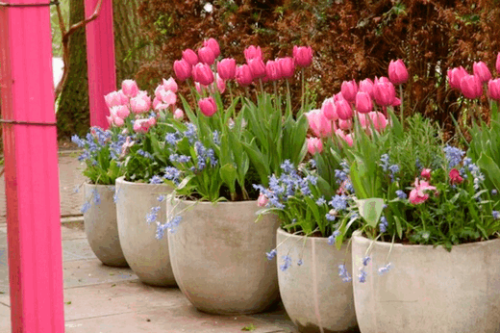
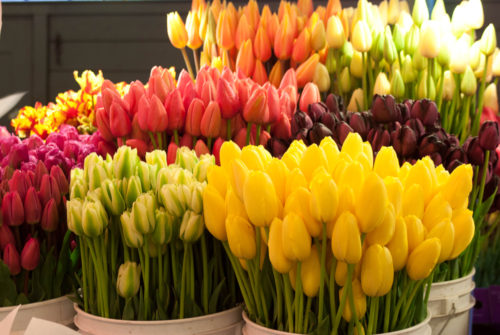
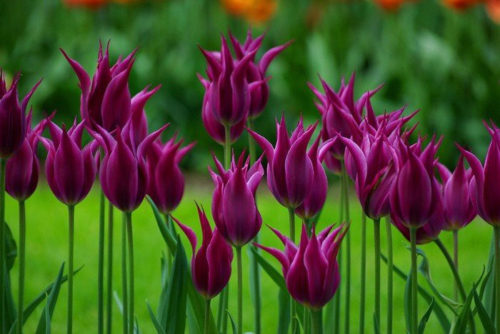

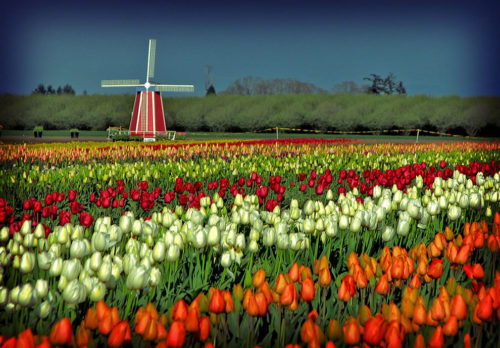
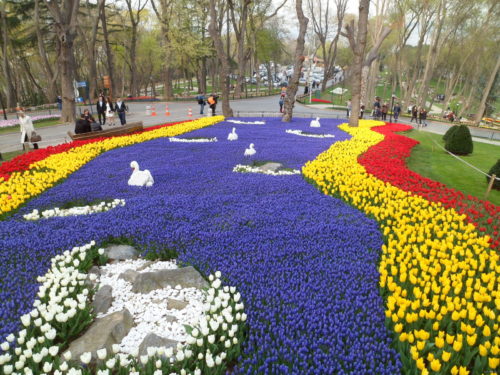





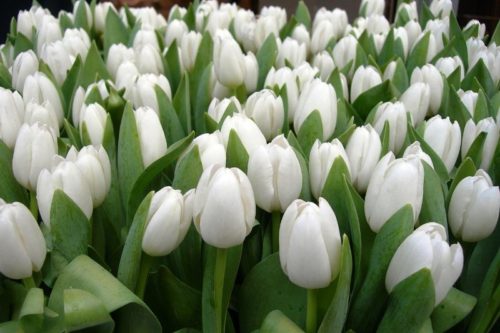
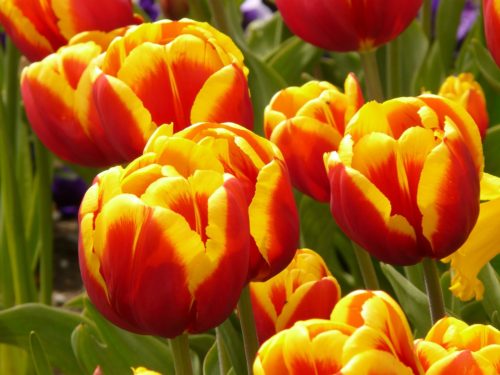












 Start a discussion ...
Start a discussion ...